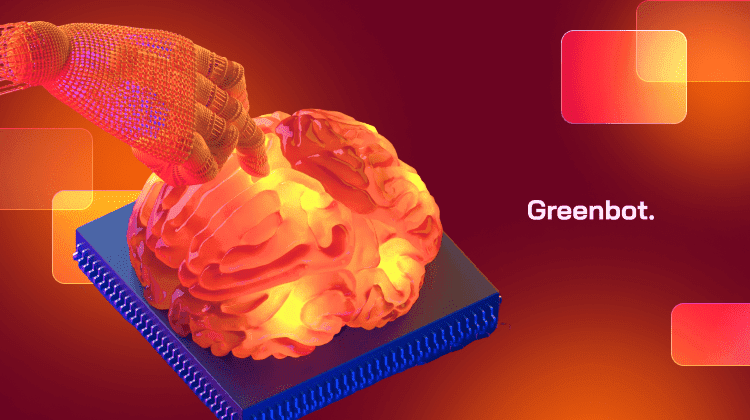
How do machines represent knowledge and make decisions like humans? Expert systems are the answer. These programs mimic human and decision making ability to solve complex problems in fields like healthcare, transportation, and finance.
From powering data mining tools to supporting critical processes, expert systems quietly improve efficiency and reliability. They rely on a knowledge base that holds facts and rules, enabling them to deliver faster and smarter solutions.
In this article, we’ll explore how expert systems work, where they’re used, and why they remain vital in AI today.
What Are Expert Systems in AI?

Expert systems replicate the knowledge and reasoning of human experts to solve specific problems. They use “if-then” rules from a knowledge base to give advice, make recommendations, or take action in specific domains.
Developed in the 1960s, expert systems were an early milestone in artificial intelligence. Edward Feigenbaum, the “father of expert systems,” created MYCIN. It helped diagnose infections and recommend antibiotics.
Expert systems rely on fixed rules created by experts. They make fast, accurate decisions but don’t learn from data like machine learning does. While good for structured tasks, they depend on the quality of their knowledge base and are less flexible than general AI.
Components of an Expert System
An expert system relies on three main parts: the knowledge base, inference engine, and user interface. Each plays a key role in how the system works.
Knowledge Base
The knowledge base is the system’s repository. It stores all the facts, rules, and information for decision-making in a specific area. It works like a library, organizing data and rules for quick and efficient access.
Knowledge engineers build the knowledge base by converting expert knowledge into rules the system can use. For example, in a medical system, a rule might be: “IF fever AND rash, THEN diagnosis = measles.“
Many systems also include tools to simplify collecting and organising expert information. They help create a usable format.
Inference Engine
The inference engine is the reasoning part of an expert system. It applies rules from the knowledge base to solve problems based more knowledge than on user input.
There are two types: the deterministic inference engine and the probabilistic inference engine. A deterministic inference engine uses facts and fixed rules to give certain answers. A probabilistic inference engine works with uncertainty, using probabilities to make decisions.
User Interface
The user interface is the system’s handshake with the real world. It allows users to interact by entering information and receiving advice or solutions. A good interface makes even the most complex systems user-friendly. For example, a diagnostic system might have a simple dashboard. Doctors would input symptoms and get clear, useful insights.
How Expert Systems Work
As mentioned before, expert systems process information using a simple “if-then” algorithm. Once data is entered, the inference engine matches it with the relevant rules in the knowledge base to generate an output. The inference engine employs forward and backward chaining to connect the dots, generate text and reach conclusions.
Forward chaining starts with facts. It applies rules to find solutions, as in MYCIN, which diagnoses infections based on symptoms. DENDRAL uses backward chaining. It starts with a goal, like finding an unknown organic molecule’s structure and verifying it against known data. These methods show how expert systems approach problem-solving.
The knowledge base is the brain behind any efficient expert system. It consists of rules and facts from human experts. These were translated into logical regulations to aid the system’s decision-making. After acquiring relevant knowledge, the knowledge base is built through knowledge representation.
This approach mimics how humans make decisions by relying on what they know. When complex problems arise, we tap into our knowledge base, process the information, draw conclusions, and decide based on our knowledge. However, expert systems are rigid. They can’t adapt beyond their rules. Unlike them, humans adjust their reasoning based on context.
Advantages of Expert Systems
Expert systems transform decision-making by helping businesses work faster and smarter. They process vast amounts of data with fast and accurate insights that save time and effort. Here are their key benefits:
- Accuracy: It cuts down on human error and provides reliable solutions in situations that require experts.
- Expertise: It offers specialized knowledge where human experts might not be available.
- Cost-effectiveness: It helps industries like healthcare and manufacturing save billions by optimizing processes.
- Consistency: It delivers the same high-quality results every time without being influenced by emotions or fatigue.
- Availability: Work 24/7, ensuring non-stop support without needing breaks or sleep.
- Scalability: Handle a massive amount of data and queries, making them perfect for big operations.
Limitations of Expert Systems
As impressive as expert systems are, they come with their own set of challenges. They’re not exactly great at keeping up with changing data or tackling new, complex problems. Let’s take a look at the limitations and why they may not be recommended:
- Adaptability: Expert systems rely on data input by knowledge engineers. So, they struggle to adapt to new or changing information.
- Manual creation: Manually building these systems can be very hard and time-consuming. It requires detailed and accurate knowledge engineering.
- Knowledge quality: Knowledge-based systems are only as good as the data they receive, so incomplete or flawed knowledge bases can cause issues.
- Lack of creativity: They stick to rules and patterns—don’t expect out-of-the-box thinking.
Applications of Expert Systems
Expert systems have transformed industries. They imitate human expertise to make precise, consistent decisions. They also improve productivity and accuracy in various fields. Here are some key applications:
Medical Diagnosis
In healthcare, expert systems analyze patient data to suggest possible diagnoses and treatments. For example, clinical tools evaluate symptoms, medical history, and test results to offer insights. Systems like MYCIN help identify infections and recommend antibiotics. These tools support, rather than replace, medical professionals, ensuring human expertise remains essential.
Financial Forecasting
Expert systems play a key role in finance by predicting market trends and managing risks. They analyze large datasets, including stock performance and economic indicators. They seek investment opportunities from their insights. The systems help traders spot risks and make informed decisions, thus reducing uncertainty in volatile markets.
Manufacturing
Expert systems improve manufacturing by optimizing processes and ensuring quality control. They monitor production lines, detect defects, and suggest real-time adjustments to maintain consistency.
A notable example is XCON, developed by Digital Equipment Corporation (DEC) to configure its PDP and VAX computers. Over six years, XCON processed 80,000 orders with a remarkable 95–98% accuracy rate. It saved DEC an estimated $25 million a year. It did this by reducing errors, speeding up assembly, and improving customer satisfaction.
XCON showed how expert systems could transform manufacturing. It also inspired similar improvements in other industries.
Customer Support
Automated customer support systems powered by expert systems have become common. These systems use natural language processing (NLP) to understand and respond to customer queries. Chatbots, like those in Zendesk or IBM Watson, are fast. They handle repetitive tasks, freeing human agents to focus on complex issues and improve response times.
Education
In education, expert systems drive adaptive learning platforms that personalize student content. These systems assess individual progress and adjust lessons to target specific knowledge gaps. Platforms like ALEKS tailor education to help students grasp concepts, making learning more engaging and efficient.
Expert Systems vs. Machine Learning.
Expert systems and machine learning are both tools in AI, but they work differently. Machine learning learns from data, finding patterns and improving over time. It uses large datasets to make predictions. Expert systems rely on fixed “if-then” rules provided by experts to solve problems.
Expert systems are best for tasks that need clear logic. These include troubleshooting and making simple recommendations. Machine learning is better for data-driven tasks, like predicting when equipment might fail. Combining these two approaches can make expert systems more flexible and useful.
Here’s a side-by-side comparison of expert systems and machine learning:
| Feature | Expert Systems | Machine Learning |
| Mechanism | Rule-based reasoning | Data-driven learning |
| Adaptability | Static; struggles with new data | Dynamic; improves with more data |
| Development | Requires manual rule updates | Learns automatically from datasets |
| Transparency | High; decisions are traceable with explanation module | Often low; complex models lack clarity |
| Best Use Cases | Diagnostics, troubleshooting | Pattern recognition, predictive analytics |
How to Develop an Expert System
Developing an expert system begins with defining the domain. This means finding the problem area, gathering knowledge, and outlining the rules or criteria the system will use. Knowledge engineers then work with domain experts. They convert their expertise into a knowledge base, using “if-then” rules and logic to guide the system’s decisions.
Once the knowledge base is ready, the next step is creating the inference engine. This component applies the rules to make decisions or recommendations. Afterward, the system is tested to ensure everything works as expected. This step helps identify any issues with logic or performance before proceeding.
After thorough testing, the system is deployed. Tools like CLIPS, Jess, and Prolog are popular for development. They provide rule-based frameworks to streamline the process.
Future of Expert Systems in AI
Expert systems are evolving, adding advances like machine learning, NLP, and data analytics. These tools are becoming more adaptable, solving complex problems by learning and improving with new data.
One exciting development is the use of deep learning and neural networks. These systems can analyze unstructured data, such as images and text, expanding their role in healthcare, finance, and law. Reinforcement learning is another innovation. It enables expert systems to improve by learning from outcomes.
Combining expert systems with chatbots and robotic process automation (RPA) opens new possibilities. This integration creates efficient systems capable of delivering real-time solutions across various industries.
Case Studies of Expert Systems in Action
Expert systems like MYCIN, IBM Watson, and the PREDICT tool have changed how doctors diagnose and treat patients. MYCIN, one of the earliest systems, identified bacterial infections. It recommended antibiotics with impressive accuracy. IBM Watson builds on this. It analyzes patient data and medical research, helping doctors create personalized cancer treatment plans.
The PREDICT tool, developed at Cambridge University, supports breast cancer treatment decisions. It gives survival estimates based on a patient’s tumor and demographics, helping doctors and patients choose the best options. These systems save time, reduce errors, and improve outcomes in healthcare.
In finance, expert systems are transforming credit assessments, fraud detection, and risk management. Tools like FICO scores help lenders make smarter decisions about loans. Fraud detection systems, like SAS Fraud Management, spot suspicious activity in real time. They protect banks and their customers from losses.
Expert systems show how technology can solve real-world problems. They highlight the power of expert knowledge and new tools. They can make healthcare more precise and improve security in finance.
FAQs About Expert Systems
What are examples of expert systems?
Examples of expert systems are XCON, MYCIN, and DENDRAL. XCON configures computers. MYCIN diagnoses infections while DENDRAL analyzes chemicals.
Is ChatGPT an expert system?
No, ChatGPT is an AI language model, not an expert system. It generates responses based on patterns in data. Expert systems use rules and knowledge to make decisions.
What are the 5 components of an expert system?
The five components of an expert system are:
- Knowledge Base – Stores facts and rules.
- Inference Engine – Makes decisions based on the knowledge base.
- User Interface – Allows users to interact with the system.
- Knowledge Acquisition Subsystem – Helps gather and update knowledge.
- Explanation Subsystem – Explains how decisions were made.
What are the three types of expert systems?
The three main types of expert systems are:
- Rule-based systems – Use rules to make inferences.
- Frame-based systems – Organize knowledge into structures called frames.
- Hybrid systems – Combine different approaches to improve decision-making.
Final Thoughts
Expert systems have played a major role in AI for years, shaping industries like manufacturing, finance, and healthcare. While newer technologies have emerged, expert systems are still valuable. They can solve problems, improve decision making and streamline operations.
This article has explored the main aspects of expert systems. If you’d like to dive deeper, consider reading research papers or case studies on their real-world use. Remember, AI benefits work best when they support human expertise, especially in critical fields like healthcare.




















